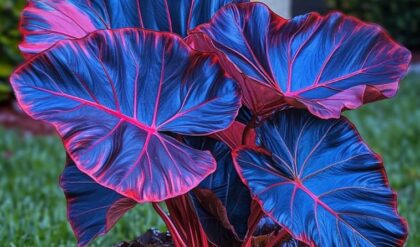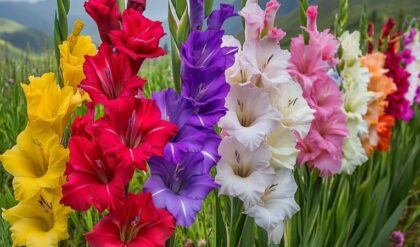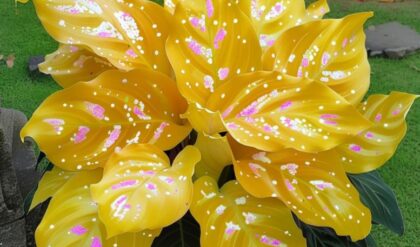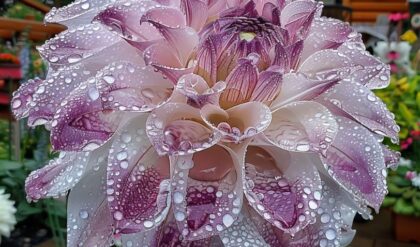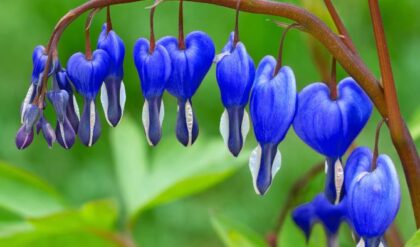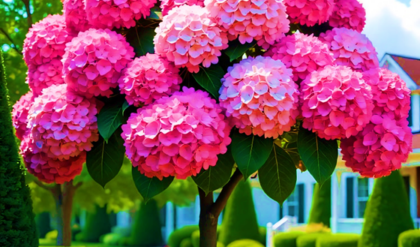The hollyhock (Alcea rosea) presents a striking tableau of vibrant colors and towering elegance, gracing gardens with its statuesque presence. Frequently reminiscent of a whimsical cottage garden or quaint village path, these flowers bring forth an air of nostalgia, perfectly framing the backdrop of summer festivities with their enchanting blooms. Their tall spires emerge from rich green foliage, offering a vertical accent that can elevate any landscape, echoing the architecture of a vibrant arena in full bloom. But hollyhocks are not merely decorative; they hold the potential for a bustling ecosystem, attracting bees, butterflies, and birds as they sway gently in the breeze. From their colorful petals ranging across shades of pink, red, and white to the less often seen, exotic black variety, the allure of hollyhocks lies not only in their visual splendor but also in the myriad of stories and experiences they evoke.
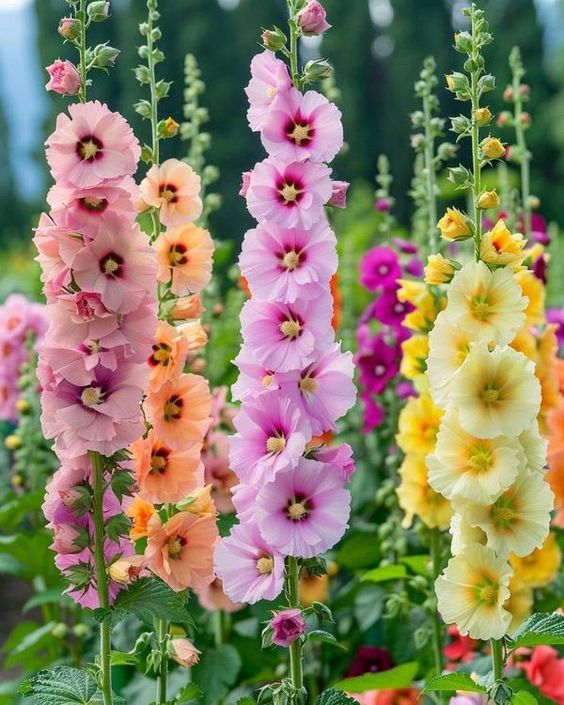
Growing and Caring for Hollyhocks
Caring for hollyhocks involves understanding their needs and the unique environment they thrive in. Often planted along pathways, they create a delightful guiding line, imbuing the space with a sense of whimsy and hospitality. Unlike many flowers that demand extensive pampering, hollyhocks prefer sunny or partially shaded spots where they can bask in warmth yet remain sheltered from harsh winds. This empowers gardeners to cultivate vibrant blooms without overwhelming maintenance routines, allowing them to focus on other aspects of their gardening endeavors.
Soil Preparation and Watering
Rich, well-drained soil acts as a foundation for robust foliage and is crucial when fostering healthy blooms as they reach for the sky. The soil should be amended with organic matter, such as compost or well-rotted manure, to ensure optimal nutrient content and drainage. Hollyhocks thrive in slightly acidic to neutral soil, with a pH range of 6.0 to 7.0. Regular watering is essential, especially during the initial establishment phase and during periods of drought. The goal is to keep the soil consistently moist, but not waterlogged, to promote strong root growth and prevent wilting.
Deadheading and Overseeding
Regular deadheading, the process of removing spent flowers, encourages continuous flowering, keeping the display dynamic throughout summer while staving off over-seeding, which can lead to unwanted self-sowing. This maintenance practice not only enhances the plant’s aesthetics but also directs its energy towards producing new blooms rather than setting seed. However, it’s important to note that some gardeners may choose to allow self-sowing, as it can lead to the spontaneous emergence of new hollyhock plants in subsequent seasons, adding an element of surprise and natural progression to the garden.
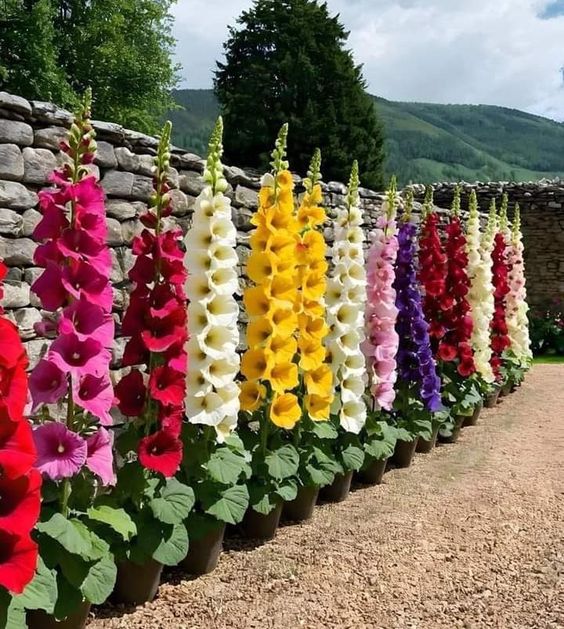
Hardiness and Overwintering
Hollyhocks are generally considered biennials, meaning they complete their full life cycle over the course of two growing seasons. In the first year, they typically produce a rosette of leaves, while the second year brings forth the iconic towering spikes and vibrant flowers. In colder climates, the plants may be treated as short-lived perennials, with the gardener providing appropriate overwintering care. This may involve mulching the base of the plants, protecting them from harsh winter winds, and ensuring the soil remains moist but not waterlogged during the dormant period. With the right care and attention, hollyhocks can often self-seed and return year after year, creating a delightful and low-maintenance display in the garden.
Aesthetic Appeal and Purpose
Hollyhocks add more than just beauty; they serve various functional and aesthetic roles in the garden. Their remarkable height can act as a natural divider between spaces, creating distinct areas that invite exploration, much like archways leading into secret gardens. Furthermore, planting these flowers intermittently among lower plant species can draw the eyes upward, transforming a monotonous flat garden layout into a three-dimensional experience filled with movement and intrigue.
Vertical Accents and Spatial Dynamics
The towering presence of hollyhocks can effectively break up expansive garden spaces, guiding the eye and creating a sense of depth and visual interest. When strategically positioned, they can frame specific areas, acting as a natural boundary or transition point between different sections of the garden. This vertical emphasis can be particularly useful in gardens with limited square footage, as it allows for the efficient use of available space without overwhelming the overall design.
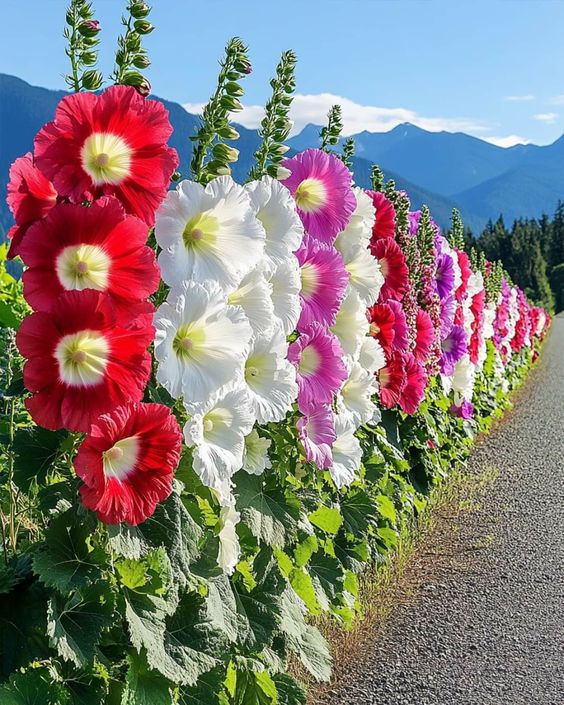
Three-Dimensional Layering
Incorporating hollyhocks into a mixed planting scheme can add a captivating three-dimensional quality to the garden. By interspersing these tall, stately flowers among lower-growing species, gardeners can create a layered effect that draws the viewer’s gaze upward, inviting them to explore the various levels of the garden. This approach not only enhances the visual appeal but also adds a sense of depth and dynamism, making the space feel more inviting and engaging.
Versatility in Garden Design
One of the remarkable aspects of hollyhocks is their adaptability to diverse garden styles and settings. Whether grown in a traditional flower bed, incorporated into a modern minimalist design, or used to accent a lush, cottage-style arrangement, these flowers possess a versatility that allows them to seamlessly integrate with various horticultural visions. This adaptability implies a broader cultural significance as hollyhocks become a canvas for individual creativity; they bridge nature and human imagination seamlessly, enabling gardeners to express their unique artistic sensibilities.
Engaging Nature’s Biodiversity
At the heart of growing hollyhocks lies their contribution to biodiversity. By cultivating these plants, gardeners unknowingly participate in a larger ecosystem, providing essential resources for pollinators and enhancing overall planetary health. As bees and butterflies gravitate toward their alluring petals, a flourishing community is nurtured—one that contributes to the survival of many species in an increasingly challenging world.
Pollinator-Friendly Flowers
The nectar-rich blooms of hollyhocks attract a diverse array of pollinators, including bees, butterflies, and even hummingbirds. These creatures are drawn to the ample supplies of sustenance offered by the flowers, and in turn, they play a crucial role in the pollination process, ensuring the continued propagation of the plants. By incorporating hollyhocks into their gardens, gardeners can actively support these vital pollinators, contributing to the overall health and resilience of local ecosystems.
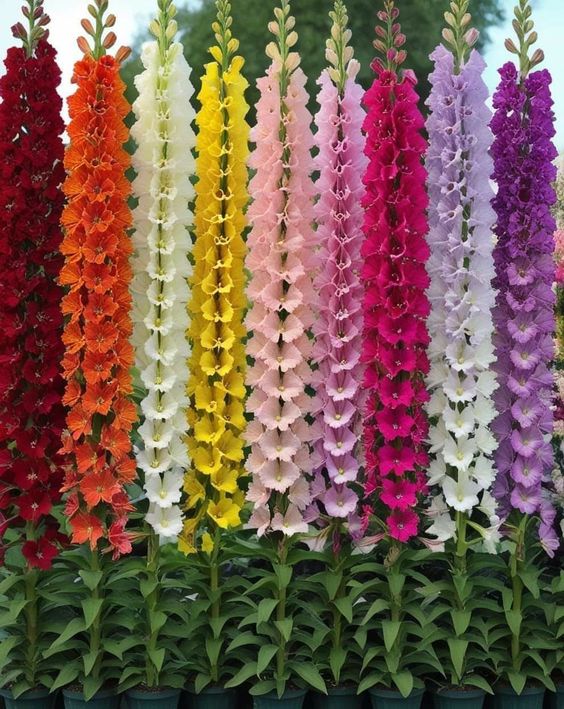
Educational Opportunities
The relationship between hollyhocks and their pollinator counterparts can serve as an invaluable opportunity for education, teaching future generations about the interconnectedness of life. Observing the interactions between these flowers and the creatures they attract can foster a deeper appreciation for the delicate balance of nature and the importance of maintaining biodiversity. This knowledge can inspire gardeners to make more informed choices, prioritizing native species and sustainable gardening practices that benefit the broader ecological landscape.
Genetic Diversity and Color Variability
The existence of unique color variations within hollyhocks, particularly the rare black variant, introduces complexities regarding genetic diversity and cultivational choices. The appearance of these exotic shades reflects humanity’s desire to seek novelty and beauty amidst nature’s offerings, bridging past agricultural practices with contemporary horticultural trends. Growers may find themselves drawn to cultivating such rarities, considering both aesthetic allure and ecological impact. This exploration of color variability can lead to a deeper understanding of the plant’s genetic makeup, as well as the potential implications of selective breeding and conservation efforts.
Conclusion
The captivating journey of growing hollyhocks transcends traditional gardening. It becomes an exploration of creativity, ecology, and personal expression—transforming simple planting into an artistic endeavor that deeply intertwines with the cycles of life. From their vibrant blooms and towering silhouettes to their role in supporting biodiversity, these enchanting flowers offer a multifaceted experience that speaks to the human spirit’s innate connection with the natural world. Whether cultivating a lush, cottage-inspired display or incorporating them into a modern, minimalist design, the hollyhock’s versatility and allure invite gardeners to engage in a profound and meaningful dialogue with the living tapestry that surrounds them.
